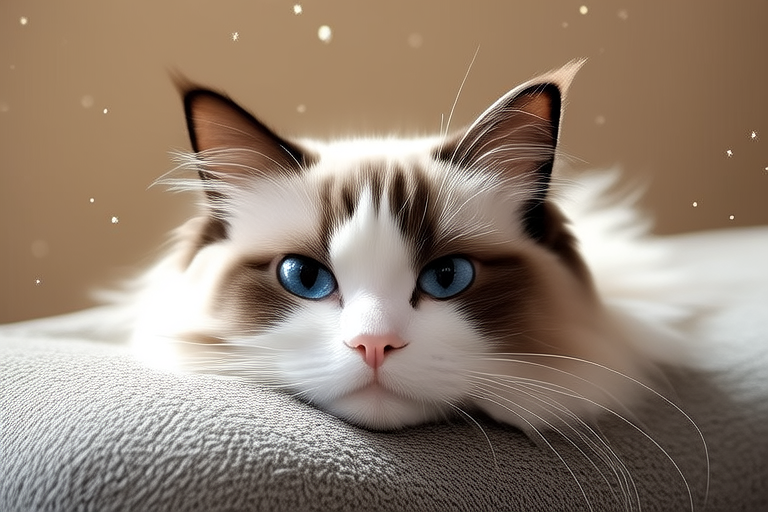Ragdolls: Nature’s Softest and Most Adorable Pet Partners
Welcome to the world of Ragdolls, a breed that has captured the hearts of many cat enthusiasts with its gentle nature and striking appearance. Known for their affectionate and docile demeanor, these felines are often described as “nature’s softest and most adorable pet partners.” In this article, we’ll explore the unique characteristics of Ragdolls, from their temperament and physical features to their grooming needs and health considerations. We’ll also delve into their history, popular myths, and provide some training tips to help you create a harmonious home environment.
A Brief History of Ragdolls
The Ragdoll breed originated in the 1960s through the efforts of Ann Baker, a breeder in Riverside, California. She selectively bred a white Angora-like female named Josephine with a male Birman or Burmese cat. The resulting kittens exhibited the unique trait of going limp when picked up, which gave rise to the name “Ragdoll.” Over time, the breed was refined and recognized by various cat registries, including The International Cat Association (TICA) in 1994.
Temperament: Gentle Giants of the Feline World
Ragdolls are renowned for their placid and affectionate personalities. They are known to follow their owners around the house, seeking attention and companionship. These cats tend to be very patient, making them excellent companions for families with children and other pets. Their calm demeanor makes them less likely to engage in aggressive behavior, even when provoked. Additionally, Ragdolls are often described as being “dog-like” in their loyalty and attachment to their human families.
Physical Features: A Feast for the Eyes
One look at a Ragdoll, and it’s easy to see why they’re considered one of the most beautiful cat breeds. With their large, blue eyes, plush coats, and striking color points, these cats are true eye-catchers. Ragdolls come in several colors, including seal, chocolate, blue, lilac, red, and cream, with patterns such as bicolor, mitted, and lynx. Their semi-longhair coats are silky and require regular grooming to keep them looking their best. Despite their fluffy appearance, Ragdolls have a lean and muscular body, giving them a graceful and elegant presence.
Grooming Needs: Maintaining Their Lustrous Coats
Maintaining a Ragdoll’s coat requires a consistent grooming routine. Regular brushing helps prevent matting and keeps their fur free of dirt and debris. Aim to brush your Ragdoll at least once a week, paying special attention to areas prone to tangling, such as behind the ears and under the tail. Bathing is generally unnecessary unless your cat gets particularly dirty or has a medical condition requiring it. When bathing, use a mild, cat-specific shampoo and ensure the water temperature is warm but not too hot. After bathing, thoroughly dry your Ragdoll with a towel and consider using a blow dryer on a low heat setting to finish the job.
Health Considerations: Caring for Your Ragdoll
Ragdolls are generally healthy cats, but like all breeds, they are susceptible to certain genetic conditions. One of the most common issues affecting Ragdolls is hypertrophic cardiomyopathy (HCM), a form of heart disease. Regular veterinary check-ups and early detection can help manage this condition. Other health concerns include polycystic kidney disease (PKD) and progressive retinal atrophy (PRA). To ensure your Ragdoll remains healthy, maintain a balanced diet, provide regular exercise, and schedule annual veterinary visits.
Why Ragdolls Make Excellent Companions
Ragdolls are beloved by many for their exceptional companionship. Their loving nature and adaptability make them ideal pets for both families and individuals. Whether you’re looking for a playful kitten or a serene adult cat, Ragdolls offer a wealth of emotional support and joy. Their gentle demeanor and affectionate personality ensure they become cherished members of the family, providing comfort and companionship to all who interact with them.
Popular Myths About Ragdolls
Despite their popularity, there are several myths surrounding Ragdolls that deserve clarification. One common misconception is that Ragdolls are completely inactive. While they are known for their laid-back personalities, Ragdolls still enjoy playtime and exploration. Another myth is that Ragdolls are hypoallergenic. Unfortunately, no cat breed is truly hypoallergenic, but some people with allergies may find Ragdolls easier to tolerate due to their shorter shedding period compared to long-haired breeds.
Training Tips for Ragdolls
Training your Ragdoll can be a rewarding experience, helping to strengthen the bond between you and your feline companion. Start by establishing a routine that includes playtime, feeding, and grooming sessions. Use positive reinforcement techniques, such as treats and praise, to encourage desired behaviors. Training can also involve teaching your Ragdoll simple commands, like coming when called or using a scratching post. Consistency and patience are key to successful training, so take your time and enjoy the process.
Conclusion
Ragdolls are truly nature’s softest and most adorable pet partners, offering a unique blend of beauty, affection, and companionship. From their gentle temperament to their striking physical features, these cats have much to offer both experienced and first-time cat owners. By understanding their grooming needs, health considerations, and training tips, you can ensure a happy and healthy life for your Ragdoll. As you embark on your journey with a Ragdoll, prepare to be charmed by their grace, loyalty, and unwavering affection.
